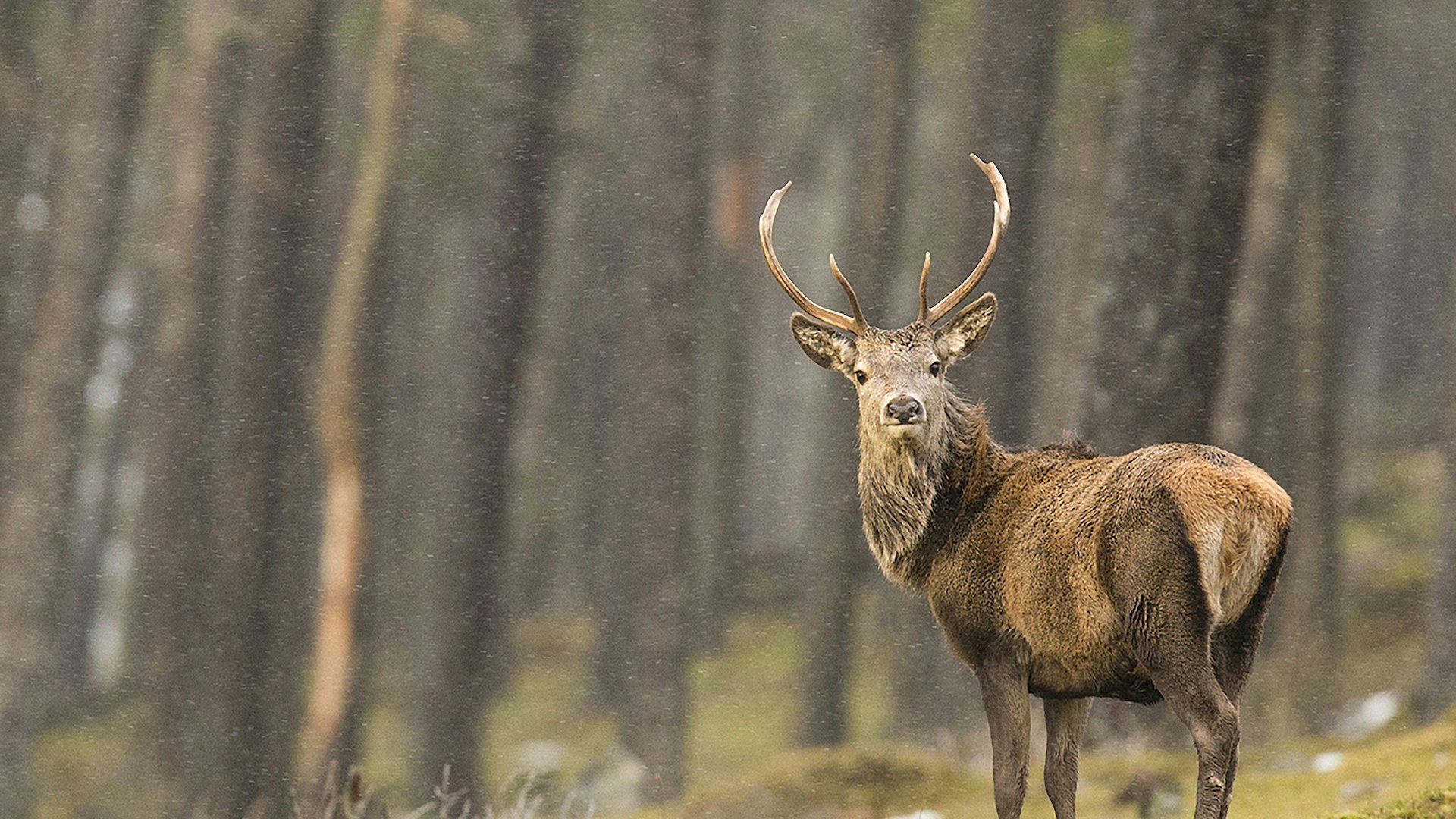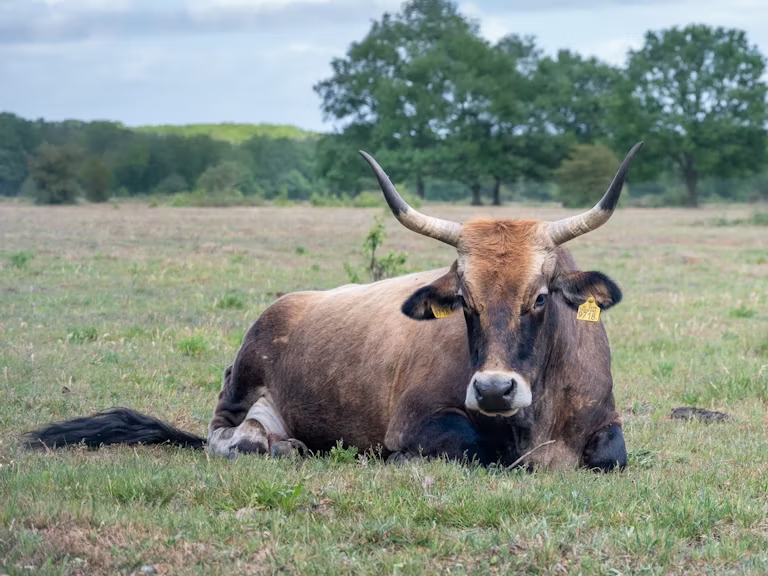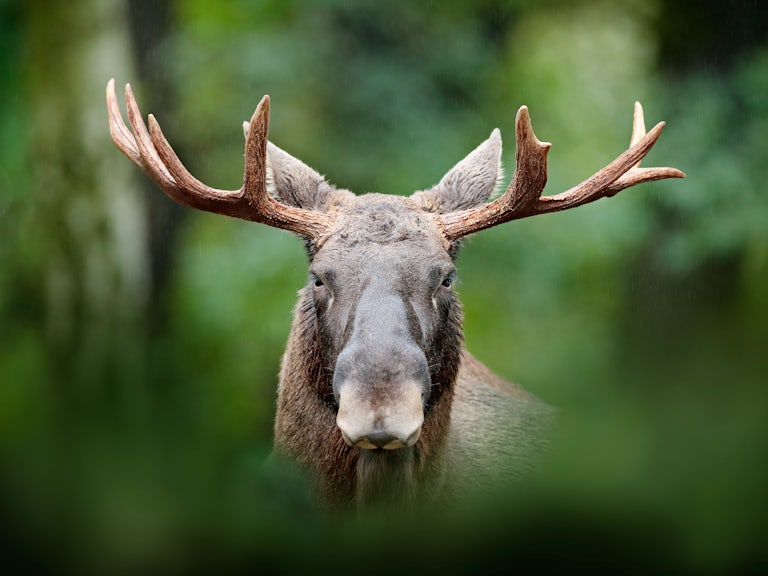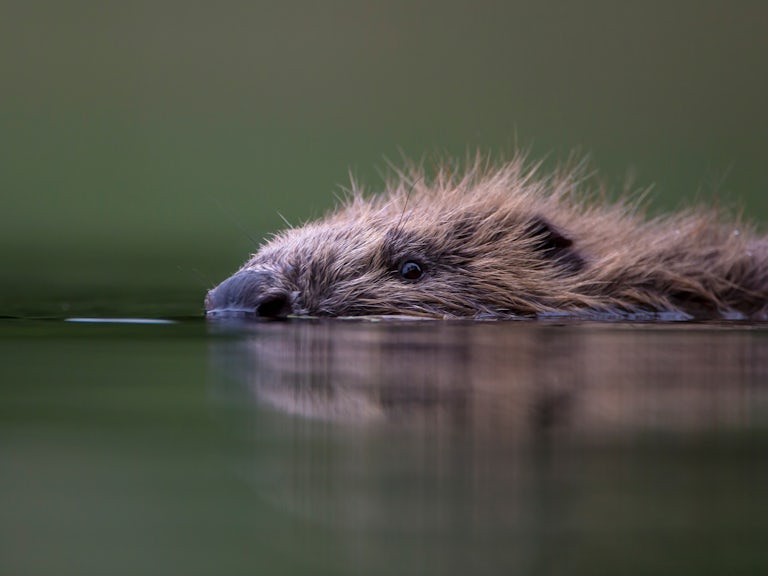Red deer
Cervus elaphus
Britain’s largest deer species, and grandest surviving mammal, is a key shaper of landscapes

How it shapes the landscape
Red deer are major shapers of the landscape. They graze grasses and sedges, and browse tree shoots and shrubs such as heather and blaeberry. These mixed feeding actions, combined with trampling and wallowing, have a significant impact on the composition of ground flora and woodland structure.
Their creation of open and bare ground provides a handy niche for a range of insects and invertebrates. Unfortunately, high numbers of red deer in the Highlands of Scotland are suppressing the natural regeneration of native pine and oak woodlands.
When they die, red deer carcasses provide an important source of food for other species including birds of prey, foxes and pine martens. Their antlers are a rich source of calcium and phosphorus for rodents and other creatures.
Where it likes to be
Although the majority of red deer in Britain are now found in moorlands and mountains, they’re originally a woodland species. The decline of woodland habitat in Britain almost made them extinct but over centuries they’ve shown remarkable resilience and adapted to the open hill. Over decades, this has resulted in the red deer of the Highlands losing body weight and antler size. Many sporting estates feed wild deer in the winter to help them survive with limited natural food sources.
Red deer are most likely happy to move between woodland, scrub and open grasslands as well as moorland. They can swim if they need to but don’t tend to swim far.
How much space they need
Red deer need space to roam but how much depends on the geography of the land, population numbers and available food. Stags may range over a couple of thousand acres in moorland areas.
Background story
Britain’s native red deer has had a bumpy ride over the centuries. Almost extinct in Wales and England by the 18th century, due to hunting and loss of forest habitat, the red deer population has recovered substantially. Sporting estates in Scotland, established in the 18th and early 19th centuries, focused on growing their red deer populations for recreational hunting, creating what they called ‘deer forests’.
Red deer populations now stand at around 360,000−400,000 in Scotland according to a recent report commissioned by the Scottish Government. This high number, combined with the lack of natural predators, means that red deer are preventing the large-scale natural regeneration of forests and woodlands. Population numbers in England are less of an issue, estimated to be around 12,500. In Wales, they number around 50.
In summary
- Britain’s largest deer species
- A keystone species, playing an important role in natural food systems and shaping natural processes
- Can be found across most of Britain, but the majority in Scotland
- Closely related to the elk
- Red deer can be found on cave paintings over 40,000 years old



